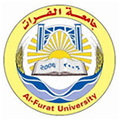آخر الأخبار
دراسة توصيفية لبعض طرز الكمثرى السورية pyrus syriaca boiss في المنطقة الساحلية
2010, Volume 1, issue 4,pp 346-362| Cite as
Morphological study of some types of syrian pear (pyrus syriaca boiss) in coast region
| authors |
Georges Makhoul |
| Abstract |
Given the importance of the Syrian pear ( Pyrus syriaca Boiss.) rootstock for pears and apples, the primary purpose of research trying to characterize five types taken from the site Aldfil (Al-Hffa) in Lattakia and Dahr-Bashir in Safita ( Tartous). The results were as follows: - When you make a cluster analysis of morphological traits studied and the status of the 13 Specification show that these two large groups formed by similarity of 80%. The first group types 2 and 5 by similarity of 95% Where trees were scattered spherical to a hierarchical, and the second group included the types 1, 3 and 4, which was divided in turn into two clusters: the first contained a first class Characterized by the crown of ball-based growth, almost, almost spherical fruit, which is similar to types 3 and 4 by 90%, which have formed in turn under the group by similarity of 98% And the two crown conical to pyramidal-based growth. And thus can be three different models and this requires in-depth study of genetic (DNA). Key words: Syrian pear, types, individuals, cluster analysis. |
| الكاتب |
جرجس مخول |
| الملخص |
نظرا لأهمية الكمثرى السورية (الإجاص السوري) Pyrus syriaca.Boiss كأصل للكمثرى والتفاح، كانت الغاية الأساسية من البحث محاولة توصيف خمس طرز مأخوذة من موقع الدفيل (الحفة) في اللاذقية وموقع ضهر بشير في صافيتا محافظة طرطوس. وكانت النتائج كما يلي: - عند إجراء التحليل العنقودي للصفات المورفولوجية المدروسة والبالغة 13 صفة تبين أن هذه الطرز شكلت مجموعتين كبيرتين بنسبة تشابه 80% تضمنت المجموعة الأولى الطرازين الثاني والخامس بنسبة تشابه 95% حيث كانت الأشجار كروية إلى هرمية منتشرة ، والمجموعة الثانية ضمت الطرز الأول والثالث والرابع والتي انقسمت بدورها إلى تحت مجموعتين: الأولى واحتوت على الطراز الأول الذي تميز بتاج كروي قائم النمو تقريبا، ثماره كروية تقريبا و تشابه مع الطرازین الثالث والرابع بنسبة 90% اللذان شكلا بدورهما تحت مجموعة بنسبة تشابه 98% وفيهما التاج مخروطي إلى هرمي قائم النمو. وقد يعود هذا الاختلاف إلى كون هذه الطرز برية ناتجة عن البذور وهي ناتجة بدورها عن التلقيح الخلطي، بالإضافة إلى التأثيرات البيئية السائدة في مناطق وجودها. وبالتالي يمكن أن تكون ثلاثة طرز مختلفة وهذا يتطلب دراسة وراثية معمقة (DNA).
الكلمات المفتاحية: الكمثري السورية ، طرز ، أفراد ، تحلیل عنقودي. |














